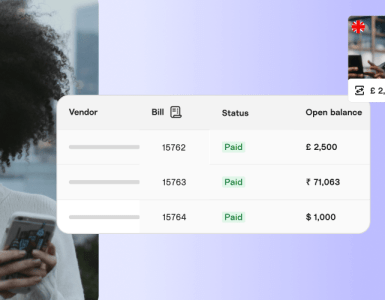
Building a brand identity is essential for freelance designers. The freelance business is highly competitive, especially for any designer who is just starting out and looking to distinguish themselves. Freelance designers can use their skills and design tools to create effective branding, create a lasting impression, and gain a loyal following. An eye-catching brand can give designers a sense of professionalism, credibility, and trustworthiness, ultimately leading to increased business opportunities.
Whether you want to work as a freelance graphic designer, web designer, or just be known as the top brand in your field, your brand design will help make sure you’re noticed in a crowd of competition. After this article, you might even consider yourself a brand designer.
Branding as a Freelance Designer
In the context of freelance design, branding refers to the process of creating and establishing a unique identity for a designer’s business. It involves developing a clear and consistent message that represents a designer’s expertise, values, and style to potential clients and the public.
The purpose of branding is to differentiate your brand from your competitors and create a positive image that evokes trust and credibility. The end goal is to be known as the best brand around for a specific design project.
By creating a strong brand, you can position yourself as an expert in your field and attract the type of clients who want to hire a designer for their skills and talents.
Branding As a Business

As a freelancer, it is essential to understand the importance of branding for your business. In addition to freelancer tools, your brand style is what sets you apart from other freelancers and attracts potential clients. It represents the values and skills that you offer and gives clients trust and confidence in your abilities. A strong brand can help you establish yourself as an authority in your field and can increase your chances of receiving new business opportunities.
Branding is not just about having a logo or a catchy tagline, it is about creating a cohesive and consistent image that reflects your work and style and proves you are the right designer. This includes your website, design portfolio, social media profiles, and any marketing materials you use to promote your services. You must also maintain consistency in your communication style, tone, and visual representation across all platforms.
This is more important as an independent designer because working solo typically means you do not have large marketing budgets, so you want to take advantage of every marketing opportunity in your startup. Effective branding can help you build a community of loyal followers who refer your services to others and eventually become repeat customers. Investing time and effort in building your brand can lead to higher rates, more clients, and a stronger market position. It is crucial to regularly assess your branding efforts to ensure they align with your current business goals.
Establishing Your Brand Identity
Identifying your niche is crucial to the success of any business. Your niche is the specific area of expertise or subject matter that you specialize in, while your audience is the group of people who are most likely to need or benefit from your products or services.
By honing in on a specific niche and understanding the needs and desires of your ideal clients, you can create tailored solutions that are more likely to resonate with them. This can make marketing and business development efforts far more effective, as you’ll know exactly who you’re speaking to, how to appeal to their interests, and how you can leverage yourself as the best fit above another designer.
Your Freelance Brand Niche
With a clear understanding of your niche and target audience, you can create powerful marketing messages and develop a brand that truly connects with your customers. The first step in finding your niche is checking what you’re good at or passionate about.
Check out what other people are offering and see if you can find an angle that’s not yet taken. Think about who would most benefit from your services can help you find your target clients. Make use of market data and feedback to get a good grasp of your potential customers. With a solid understanding of your niche, you can craft winning ad campaigns and build a great brand that totally vibes with your peeps.
Crafting a unique brand message

Crafting a unique brand message is essential when you’re starting out or just looking to stand out. Your new brand can craft your message by identifying and defining your core values and mission. By building your brand from the ground up, you’ll find that developing a clear and compelling message can help you connect with your target audience. The message should be memorable, concise, and resonate with the intended audience. It should let them know they will hire the best brand if they work with you.
Creating a visual identity (logo, color palette, typography)
Creating a visual identity is a crucial step in establishing your brand’s image. To do this alone, you may need to lean on some graphic design skills (if you don’t already know them). You’ll want to spend some time designing a logo, color palette, and typography that best represents your brand and the style you’re looking for.
A logo is the face of the brand that appears on all marketing channels, hence it’s essential to design it in a way that is easily recognizable and creates a lasting impact.
Your color palette also plays a crucial role in making a brand memorable as it evokes emotions and helps communicate the personality of your brand.
Typography is equally important in creating a recognizable brand image as it affects the legibility and readability of the brand’s messaging. A consistent visual identity across all marketing channels creates a sense of unity and professionalism, building trust and loyalty among customers.
Building Your Online Presence
Developing a website that reflects your brand identity
Developing a website that accurately reflects your brand identity is essential in today’s digital age. Your website is often the first point of contact that potential customers have with your business, and it should showcase you as an expert designer.
One of the first steps in creating a streamlined website is to ensure that your visual identity is coherent and consistent throughout all aspects of your site. This means your visual identity should be well-optimized and flows across every page of your site.
Your website should be easy to navigate, with a user-friendly interface that creates a positive user experience for visitors. Aim to make sure your website is memorable and unique and sets you apart from your competitors. Also, be sure you have plenty of calls to action and ways to reach you sprinkled throughout the site. If someone is looking for a designer online, you want to be the last stop they make.
Creating a portfolio that showcases your work and highlights your strengths
Creating a portfolio that showcases your work and highlights your strengths can be a daunting task, but it is essential for showcasing your abilities and making you stand out to potential employers.
Select your best work and organize it in a way that flows smoothly and exhibits your skills. Highlight your strengths, such as your attention to detail, creativity, or problem-solving abilities. Explain your thought process behind each project and what challenges you faced and how you overcame them. Include things like your experience working across a range of industries, or focus on your specialty in specific client industries.
Be sure to include your unique skill sets and ability to meet a deadline. Your portfolio should be a reflection of your growth and development as a professional and show off your wide experience designing.
Optimizing your social media profiles to align with your brand

In today’s digital age, social media plays a crucial role in building your online presence. It is important to ensure that your social media profile aligns with your brand identity. Your profile picture and cover photo should reflect your brand’s logo or personality. Use the colors and fonts of your brand throughout your profile consistently.
Engage with your followers regularly to build a relationship and foster loyalty. Optimizing your social media profiles might take some time, but it is a crucial aspect of building your online presence and attracting the right audience. Consistency is the key to maintaining a strong brand identity across different social media platforms. You never know where someone might be looking for a designer whose a great fit for their project.
Getting to know your target audience
In order to create content that will be effective, it is important to get to know your target audience. This can mean your target audience for your clients, or your client’s clients.
This means understanding their needs, preferences, behaviors, and attitudes. You can start by conducting market research, such as surveys, focus groups, online analytics, and social media monitoring. Also consider factors such as age, gender, location, income, education level, and lifestyle, as these can impact how your audience perceives and responds to your content.
Networking and Collaborating
As a freelancer, networking is crucial for getting new clients and building long-lasting relationships. As you start to establish relationships with other freelancers and professionals in your industry, you’ll be able to increase your visibility and find new opportunities.
Meeting new people and building relationships may feel daunting at first, but it’s a necessary component of being a successful freelancer. By networking effectively, you can expand your business, learn new skills, and remain relevant in your industry.
Branding as a Marketing Tool
Using your brand to attract clients and differentiate yourself from competitors
One of the most important aspects of building a successful design business is developing a strong brand that will attract clients and set you apart from your competitors. Your brand should reflect your unique style and approach to design and should be consistent across all of your marketing materials and online presence. By developing a distinctive brand, you can more easily establish yourself as an expert in your field and build trust with potential clients.
A strong brand can help you create a sense of community among your clients, encouraging them to refer you to others and helping you to grow your business over time. Whether you are just starting out as a freelance designer or looking to take your business to the next level, investing in branding is essential to building a successful and sustainable career.
Maintaining Your Brand
Brand Consistency
Your brand identity is what sets you apart from other designers in the industry and establishes trust with your clients. Consistency creates a sense of professionalism and credibility, reinforcing the message you want to convey to potential clients.
When you use the same font, color palette, and logo across all of your marketing materials, your clients will recognize your brand easily and quickly. Whether it’s 2023 or 2030, your brand identity is likely how you will be compared to top brand designers.
Evolving your brand
Your brand needs to constantly evolve as your business grows and changes. Your brand is the face of your business and communicates to your clients who you are and what you stand for. As your business expands, your brand needs to keep up in order to remain relevant and attractive to potential clients. This means revisiting your branding strategy regularly, assessing how well it is working, and making changes as needed.
Conclusion
A strong brand identity is important for any business, but crucial for a freelance designer. Designers can use branding to establish themselves as design experts and stand out in a crowd of the best designers. Designers that focus on their visual brand identity, and their social media presence, and make sure to grow their brand with their business will find the best return on their investments. They may even be able to offer their services as one of the best freelance brand designers.



